Growing Blog
Grower Profile: What The Fungus Mushrooms In Summerland, British Columbia
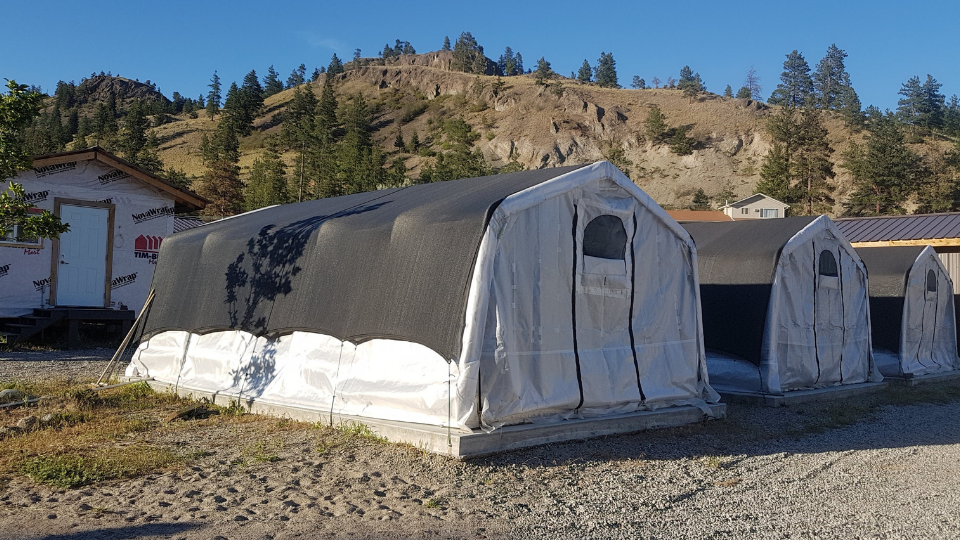
Contents
When you love growing mushrooms as much as I do, visiting other mushroom farms is kinda like going to Disneyland. An exciting adventure!
It’s true. There’s nothing better than seeing what other farmers are doing, and connecting with amazing people who share a passion for fungus.
Recently, I was lucky enough to visit What the Fungus Mushrooms (WTF), owned and operated by Brian Callow in Summerland, BC.
Summerland is located near Lake Okanagan, smack dab in the middle of Canada’s wine growing region.
It’s an awesome place for a vacation.
But it’s also outrageously hot and dry for most of the summer. In fact, it’s a desert. And yes, there are rattlesnakes.
When we were there, the temperatures reached the mid nineties- not at all the typical place you’d expect to see a mushroom farm.
But then again, WTF is not your typical farm, and Brian is not your typical farmer. He’s managed to bring this awesome seasonal mushroom farm into existence using innovative techniques, unique strains, and a strong desire to deliver fresh mushrooms to the region.
Let’s take a look to see how he does it!
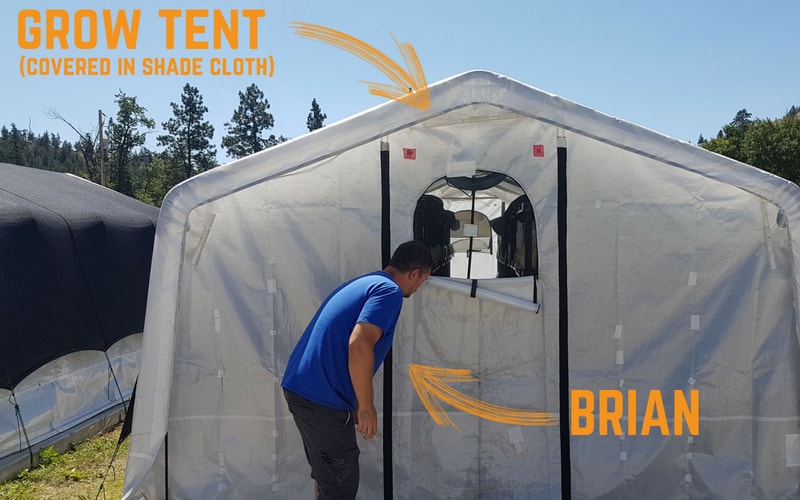
Growing Outdoors In The Summer
Sure, it would be easy enough to grow mushrooms in hot climates… if grown indoors with A/C and other environmental controls.
Expensive, yes, but very doable.
That’s why perhaps the most striking thing about WTF’s farm is that all the mushrooms are grown outdoors, through the summer, with no A/C or other temperature controls.
I would call it “low-tech” but that wouldn’t really do justice to just how innovative the system is.
The farm has 5 separate “grow rooms” which are essentially just re-purposed portable car shelters sitting on concrete pads. The outside of the shelter is covered in shade cloth, which Brian said is responsible for the majority of the temperature control.
Stepping into the grow room is shockingly refreshing. When we were at the farm, the sun was beaming down, and ambient temperatures outside were well over 30 deg C.
But inside the grow tent? It was cool as a cucumber.
After enough growing experience, you can just feel what conditions make a mushroom happy- and these grow rooms really do have it all.

The inside walls of the tent and the plastic shelving are also covered in shade cloth, which helps keep everything cool. Additionally, large humidifans are installed above the entrance of each tent. These fans ensure a constant stream of fresh, humid air through the grow room, so that everything stays wet and cool.
Growing mushrooms in semi-open tents with a humidifan also ensures that the CO2 concentration in the air remains low, which is one of the hardest things to achieve when growing oysters indoors.
The end result is a perfect mushroom growing environment, throughout the summer.
Brian says that once the temperatures get up to 36 deg C, the grow rooms require a little more attention, but other then that, they are really low maintenance.
WTF uses portable shelters on concrete pads, with ample drainage.
Shade cloth is placed outside the grow rooms, and on the individual shelves.
These things aren’t cheap, but they work like a charm to bring fresh humid air through the tents.
All these things together make a perfect mushroom growing environment, in the hot summer.
What About The Bugs?
One of the first things I thought about when I saw this system was those darn bugs.
Bugs are always a huge problem when growing outside… aren’t they? How in the heck can they keep the bugs out of the mushrooms?
I know when I grow outdoors, I need to be super vigilant and harvest the fruits quickly, otherwise bugs will inevitably spoil the harvest.
But this is one where growing in a desert climate might actually be a huge advantage. Sure, there are some bugs, but not nearly as many as there would be in more humid climes.
For the most part, they can be mitigated by simply cleaning the grow rooms after harvest, so that nothing can really settle in. Brian also ensures that there is minimal vegetation around the grow rooms, to discourage any bugs from hanging out.
I am also told that he employs a frog or two that guard the harvests by eating anything that might stop by.
Win-win.
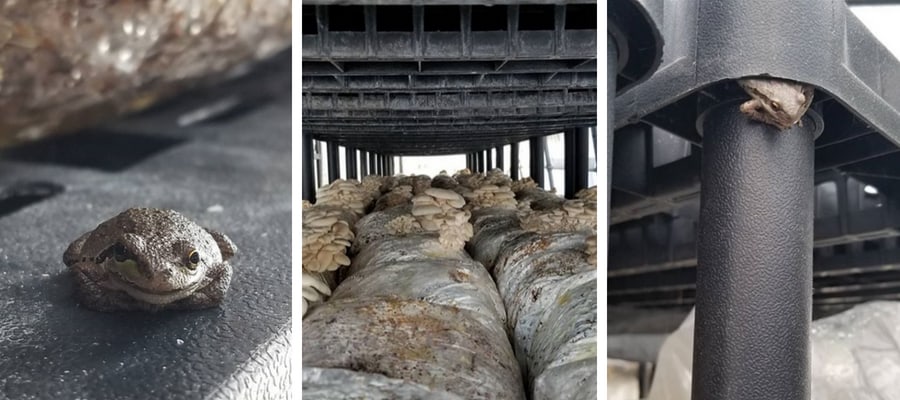
What Kind Of Mushrooms Do They Grow?
You’d think that in a hot climate, there would only be a few “Candidates for Cultivation”. But this couldn’t be farther from the truth.
WTF grows Pearl Oyster, Pink Oyster, Chestnut, Enoki, Lion’s Mane, King Oyster, Elm Oyster, and I’m sure many more. That’s just what I saw when I visited.
One of the most interesting is the Pearl Oyster strain. It was actually developed from a wild clone found just 45 minutes south of the farm, in Oliver BC.
It grows spectacularly at the farm- which makes total sense, since it grows naturally in the very same environment, and would already be genetically predisposed to grow in those conditions.
This strain grows in big beautiful clusters, with hardy looking caps. I can see why chefs love them!
I was also impressed by the Lion’s Mane. Typically, this mushroom prefers cooler conditions, making it a poor candidate for hotter climates.
However, the LM strain that WTF is using was developed from a wild clone found in Portland, Maine. It performs exceedingly well at the farm.
The success of growing these mushrooms at the farm really shows that quality and appropriateness of the strain is just as important as picking the right species.
As a side note, I left Brian with a plate of Volvariella volvacea (paddy straw mushroom) and Cordyceps- so perhaps they’ll have a couple more species in the future 🙂

The Growing Process
Growing mushrooms is a lot of work, and in order to be feasible as a business, the farm needs to be efficient. Every process needs to be constantly scrutinized and incrementally improved over time.
Brian has put a lot of work into the farm over the last 5 years, and you can tell he knows what he is doing. Nevertheless, he seems to be tinkering with everything from the sterilization, to the workflows, to the substrate recipe.
WTF’s process, like many mushroom farms, begins in the lab. All spawn is made on-site, starting with a culture plate. The spawn is used to inoculate 6 lb blocks of sawdust and soy hulls.
Once colonized, these blocks are taken into the grow room for about 2 fruiting cycles.
Let’s take a closer look at each of these processes, and see what makes them unique.
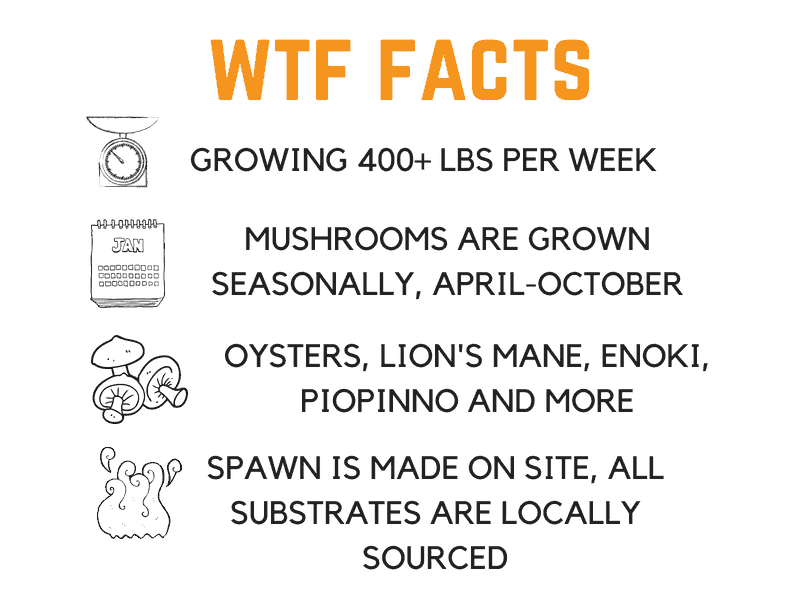
The Lab
WTF has two labs, one of which was just getting set up while I was there. The original lab is simple, but functional. The main door opens directly from outside to the “clean room”, where there’s a wide laminar flow hood.
Colonizing agar dishes are stacked up on the shelves, and a fridge in the same room holds all the master culture slants. There is a large opening and a long hall of shelves that hold all the incubating bags and jars of spawn.
As with the rest of the operation, the simplicity of the lab definitely stands out. It seems many labs and clean rooms go way overboard to try and minimize any potential contamination.
At WTF, it seems much more relaxed- yet Brian says contamination on plates is really rare.
Making Spawn
WTF makes all their spawn on site, starting with a culture on agar. One of the main reasons for this is that the particular strains they are using are just not available commercially.
The lab is simple, but effective. Cultures are grown out on petri dishes and used to make first generation grain spawn. For long term storage, cultures are stored on master culture slants in a small refrigerator.
Brian uses a proprietary process for preparing grain, that doesn’t involve any soaking or simmering before sterilization. As far as I can tell, they dry pack the spawn bags, add the correct amount of water, and add a secret ingredient that allows for the spawn to come out perfect every time. Not needing to soak and simmer is a huge savings in cost and labor, making the operation much more efficient.
They use Rye Grain for grain spawn, but also use sawdust spawn and sometimes a combination of the two.
Sawdust spawn takes longer to colonize, at about 5 weeks compared to less than 3 weeks for grain. Because of that, sawdust actually has higher rates of contamination than the much more nutritious rye grain.
Some strains can do quite well on sawdust, specifically the more aggressive species like Oyster. Other species, like Chestnut Mushrooms or Piopinno, tend to be slower, and do much better on grain.
But there is one advantage of using sawdust- and that is“top spawning” fruiting blocks.
When using sawdust spawn, Brian simply adds the right amount of spawn to the top to the fruiting block- with no mixing. Believe it or not, this is a huge time saving move.
When only doing a few bags, it’s not big deal- but when you’re making thousands of fruiting blocks, the extra 30 seconds it takes to mix in the spawn really adds up.
Interestingly, the blocks don’t take any longer to fully colonize when top-spawned with sawdust instead of thoroughly mixing with grain. So not only do you save time by not mixing, you don’t waste any time for longer colonization.
Top-spawning like this does not work with grain spawn, as the blocks will take longer to colonize and will often contaminate.
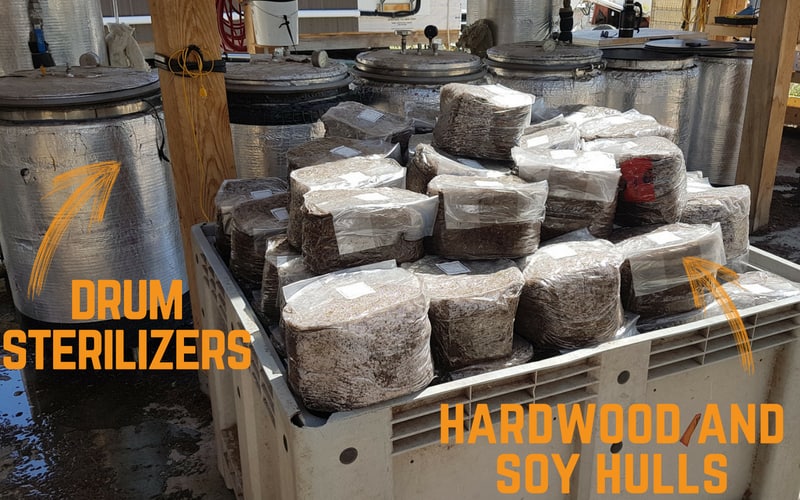
Sterilization
The bottleneck of a mushroom operation is often sterilization. It takes a lot of time, energy and physical labor to process the huge number of spawn and fruiting blocks.
At WTF, the sterilization process has gone through a number of iterations.
Like many other growers, Brian started off sterilizing bags 6 at a time using All American Pressure Canners. But this simply does not scale.
So, he designed a larger steam sterilization system using 55 gallon drums.
Steam is produced by heating up water with propane burners in 2 custom made boilers. The steam is then brought to a header and injected into 7 custom drums. The drums are custom-fitted with lids, insulation, and pressure relief valves.
Everything is done at near atmospheric pressure, so the steam never gets much hotter than atmospheric temperature. For this to work, Brian sterilizes the bags for a whole 18 hours from the time they reach 100 degrees. The bags then need to be cooled, which means turning off the propane and allowing the drums to cool for 3 days.
If an attempt is made to take the bags out any sooner, the bags will have not yet formed a vacuum seal, and the contamination rates are high.
This system is pretty innovative. It’s a huge cost savings over using a large full pressure autoclave, and still works to sterilize huge volumes of substrate.
But there are downsides. Firstly, a complete sterilization run takes 4 days. 1 day to sterilize, and 3 days to cool down.
Secondly, there’s a huge amount of physical labour involved for loading up the bags and taking them out. Remember, extra steps mean extra work means extra cost- and a less feasible operation. Because of this, Brian has worked hard to come up with an even better way to sterilize his substrates.
Being in the wine country, WTF has access to the large wine containers typically used for harvesting grapes. Noticing that they are made from temperature resistant polypropylene, Brian thought to customize these totes with steam injection coils and removable insulated panels.
This is the kind of innovation and relentless pursuit of efficiency that makes this farm so successful.
For one, the removable insulation allows for a much faster cool down time. The wood framed panels are removed as soon as the sterilization is complete, shaving a full day off of the cool down period.
Secondly, the totes are modular, and easy to move around with a small tractor. This allows WTF to move the blocks from sterilization to inoculations way more efficiently. They are just starting to implement this method, but Brian figures it will help them scale in a big way.
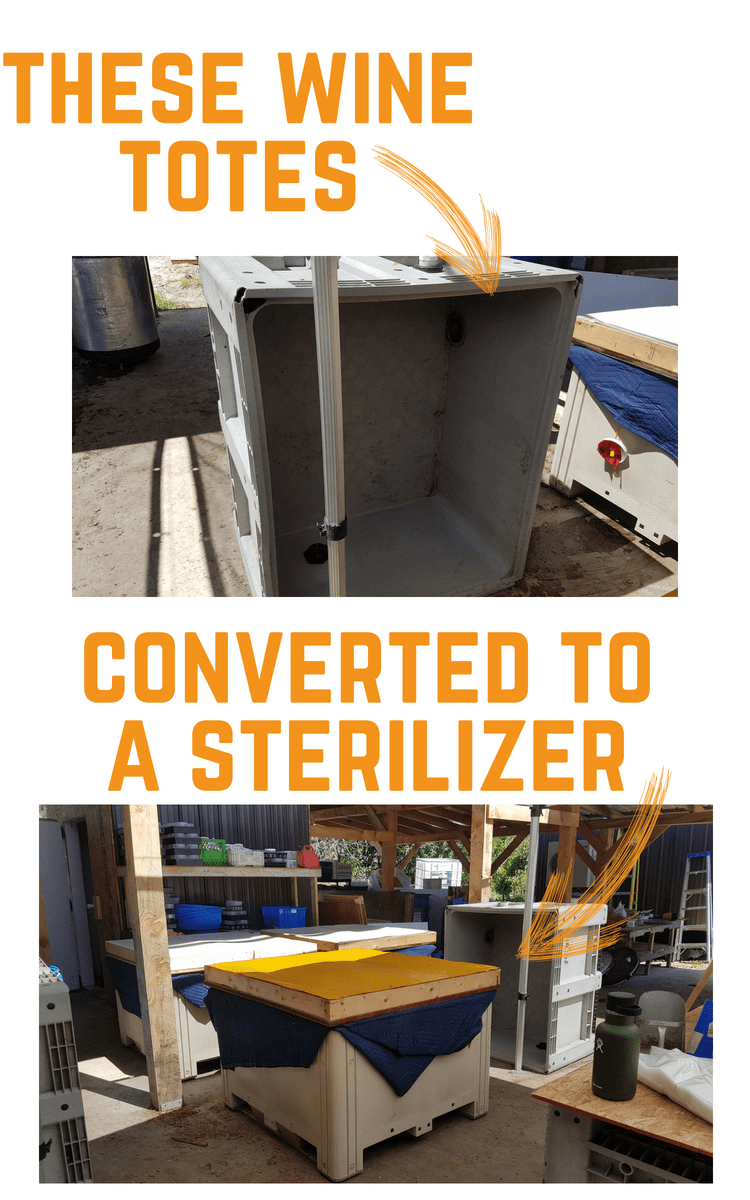
Inoculation and Incubation
Bags are inoculated in front of a flow hood in the lab. The new lab was fitted with a garage door so that the fruiting blocks can be dropped off with a tractor, right into the inoculation area.
As mentioned previously some bags are top spawned, and some others are thoroughly mixed. The bags are then placed on shelves for incubation at room temperature.
Although much of WTF’s operation is outside and not temperature controlled, the lab and the incubation area are. Everything is kept at room temperature. (~21 Deg C) which, relative to the outside heat, feels quite cold.
Once the bags are fully colonized, they are brought out into the greenhouses for fruiting.
Substrates and Fruiting
WTF shares the property with an arborist company- managed by Thor Clausen- who also happens to be Brian’s business partner. This allows them access to sawdust and wood chips from local trees. This is also a huge cost savings, using local materials rather than fuel pellets, or trucking in suitable hardwoods from far away.
The current substrate recipe they use for fruiting blocks is 65% hardwood sawdust and chips mixed with 35% soybean hulls.
Soy Bean hulls are amazing for producing huge yields on the first flush. Brian is still tinkering with this recipe to determine the best mix. The higher percentage of supplementation, usually the better the yield- until you start to run into contamination.
Harvesting, Storage and Delivery
As soon as the mushrooms are ready, they are harvested and place in breathable, plastic containers which can hold 5 lbs of mushrooms. They are then stored in a walk-in fridge before being shipped off to local restaurants.
Because they are harvested fresh, handled with care and only shipped locally, WTF mushrooms have a really good shelf life. Some of the Oyster strains can be stored for 2 weeks before being used, which is an exceptionally good shelf life for fresh gourmet mushrooms.
Growing Mushrooms Seasonally
WTF starts making fruiting blocks in February and starts harvesting the first crop in April. By the end of October, the season is over. The shorter growing season obviously limits the amount of mushrooms they can sell in a year, and can be difficult to manage from a cash flow perspective- but growing seasonally also has some huge advantages.
The main advantage is a minimized cost of operations. The entire operation is outdoors, with the exception of the lab and incubation areas. There is a large concrete pad for the sterilizing and prep, but it only has open walled shelters- no large expensive buildings that need to be maintained or heated through the winter.
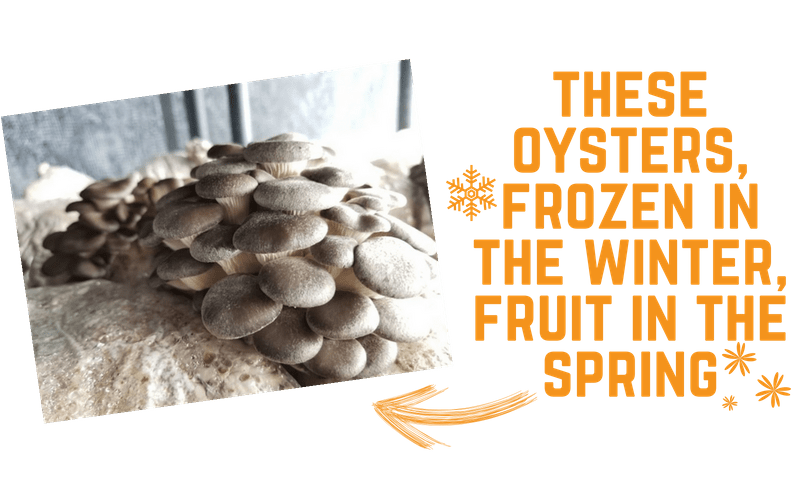
Brian has also experimented with “over-wintering” fruiting blocks. This means he lets them completely freeze over the winter, in the grow rooms. What a cool thing to do! I have never tried this before, but it’s great to see it being done on a commercial scale.
When the spring comes, the blocks thaw out, and start to fruit right away. He has already had success overwintering the most cold tolerant species, namely Pearl and Tree Oyster.
This allows the farm to get a head start in the spring without having to start too early.
A Local Success
WTF delivers fresh mushrooms to about 45 restaurants in the Okanagan area. They are currently growing 400 lbs per week, but still can’t even keep up with demand.
In fact, they are planning on doubling that next year!
He says he doesn’t even need to call the chefs, as most of the time, they’ll be texting him asking for the next batch. Talk about good customers!
WTF is also supporting the local economy, with 2 full time employees that are paid well.
This is unusual in the mushroom industry, as many growers (especially large scale commercial growers) will try to minimize the labor costs as much as possible, and pay the absolute minimum wage required.
Brian believes that if he pays his employees well, they will be more involved, take more pride in the operation, and stick around for the long haul. Well trained employees can also be an integral part of growing the business, and passing the knowledge on to new employees and students.
WTF sells mushrooms for about $12/lb to chefs and restaurants and $20 /lb at the farmer’s market.
Yes, this is a premium price- but it’s a premium product that is in demand. You can’t get mushrooms like this anywhere else in the area. People in the Okanagan know that fresh, locally grown produce is well worth the price.
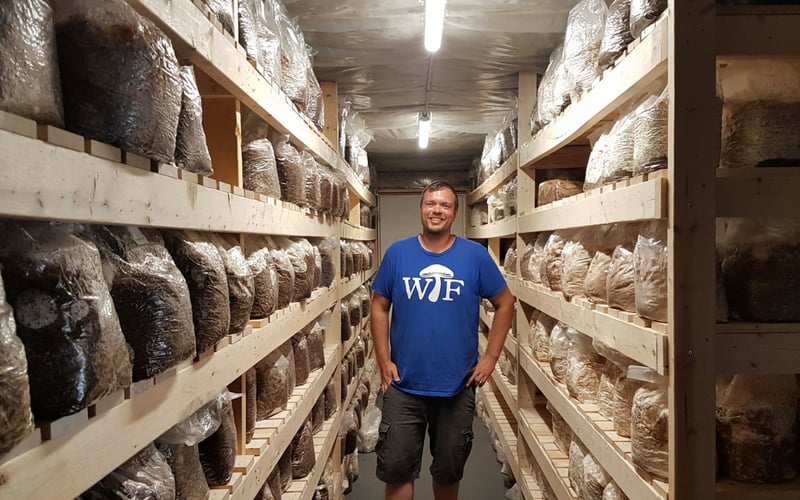
What Makes WTF Work?
Other than having a dedicated, master grower at the helm, what is it that makes WTF work as a commercial operation?
There is a unique combination of factors that make WTF a success, but some are more obvious than others.
Great Location
At first, I thought growing mushrooms in Summerland would be a huge disadvantage, mainly because of the high temperatures in the summer months. But this couldn’t be farther from the truth.
The Okanagan is a major tourist destination, and there’s a high concentration of quality restaurants. People in the area want to see fresh, local food on the menu- and chefs know this.
There is also the Penticton Farmers Market, which is large, busy, and full of tourists looking for local food options. Seeing fresh, unique mushrooms can really capture people’s attention.
Innovative Techniques
WTF is unique- and operates in unique conditions. Because of this, Brian has developed innovative processes, through trial and error, that makes his operation efficient.
From the “low-tech” greenhouses to the custom made sterilizers – every aspect of the operation has been tweaked over the years to get to where it is today. From talking to Brian, you can tell that he isn’t done yet, and continues to find better ways to do everything.
Good Branding
WTF markets their products well. Seeing “local WTF mushrooms” on the menu really resonates with both the tourists and the local population in the Okanagan. The mushrooms are of high quality, and Brian has developed good relationships with the local scene, which is always important.
YouTube
WTF is becoming well known online with other aspiring mushroom growers, mainly through their popular YouTube channel, with over 21,000 subscribers at the time of writing. This helps to provide additional sources of revenue for the farm.
You Should Visit This Farm
For people wanting to learn how to grow mushrooms commercially, WTF offers a one-of-a-kind mentorship program.
Students come in from all over the world to get hands on experience. They stay on the farm, and take part in all the processes.
This kind of knowledge is something that can’t be gained from a book or videos, and is a huge accelerator for aspiring growers.
Brian really takes pride in this mentorship program, and I totally get why.
You can tell from the students that go through the program that they gain some valuable knowledge, all while having a fun and rewarding experience.
The program is 1 week long, and usually books up way in advance. Check out the WTF website for availability if you are interested.

Can You Duplicate These Techniques for Your Operation?
One of the major reasons I wanted to start doing these “Grower Profiles” is to share best practices, so you can take what works and incorporate them into your own operation. We can learn so much from the trials and tribulations of others!
I hope you can get some major takeaways from this article. Be sure to let me know in the comments below if you have any other questions, or let me know if you learned something new and useful.
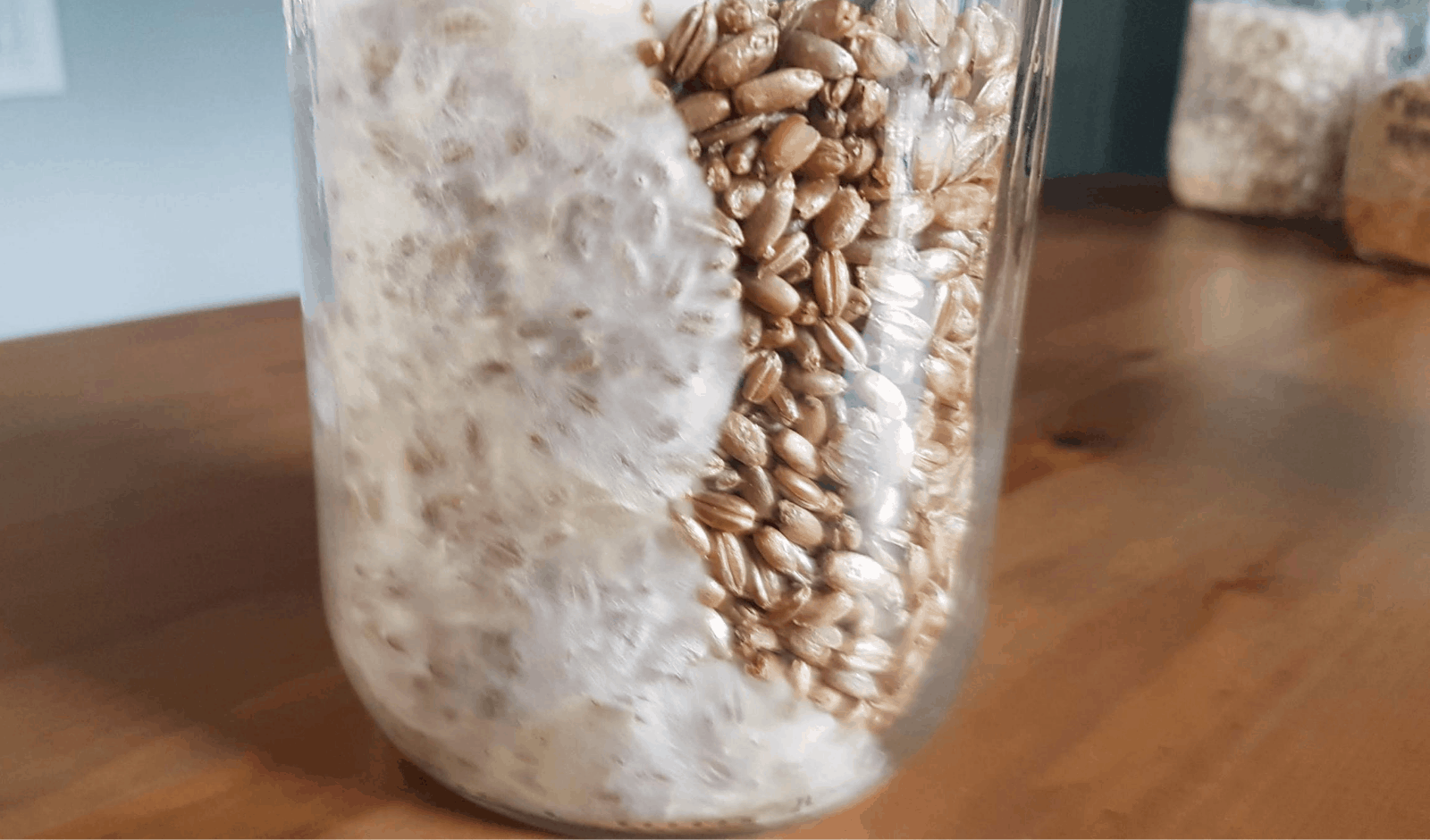
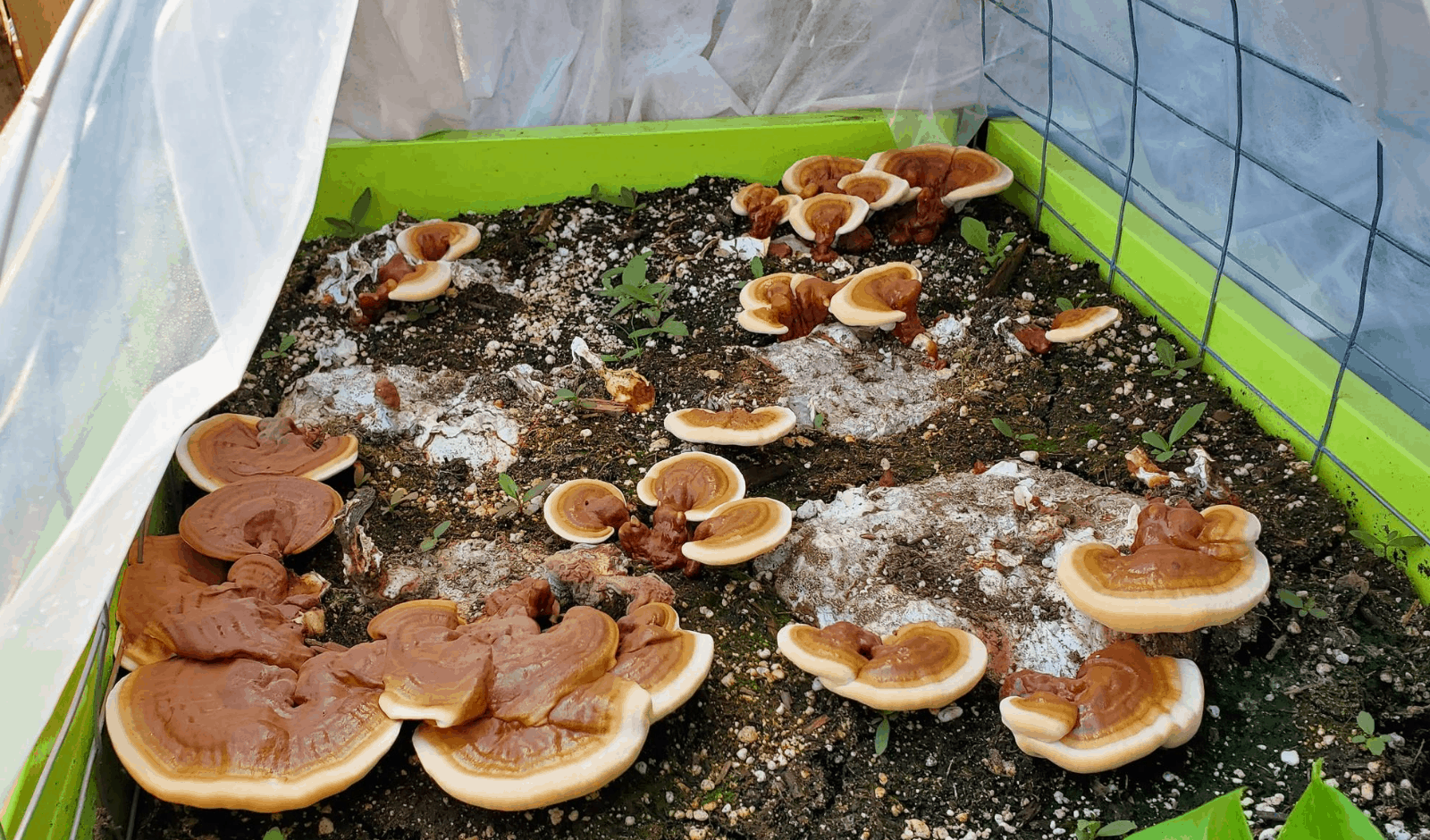
Excellent Article. Concise, informative & an enjoyable read.
Aloha from Aumakua Mushrooms, North Shore, Hawaii!
Thanks for reading! I’m sure you face similar challenges with heat ect. in Hawaii!
Really great to see such a professional and educational article about my farm. Tony, you did an excellent job describing WTF to your audience. Had a blast and hope to see you again soon man!
It was so awesome to see your farm, thanks again! WTF is such an incredible operation, and is run by wonderful people. Wishing you all the best!
Excellent article Tony. The grower profiles are extremely helpful, they offer platforms for people with similar circumstances platforms to take and perhaps apply. Keep up the good work.
Mark Buote
Marx Mushrooms
Thanks!! Glad you like them- more to come (hopefully :))
Hi. I’m just starting out and have been soaking up knowledge from both FreshCap and WTF videos and articles! Thank you so much Tony and Brian for sharing with us!!
Question on the sawdust spawn. Since it takes longer to colonize, leading to more chance of contamination, why would sawdust be choosen over grain to create spawn? Any tips for keeping the sawdust spawn contamination free? Could sawdust spawn be done in mason jars rather than bags, or would it be too difficult to break apart since it’s finer than grain?
I have 5 kgs of rye grain on order, which is more expensive than what I can get locally sourced hardwood sawdust pellet for. I’m really interested in finding locally sourced materials…shipping is so expensive here in Australia.
Thanks a bunch and look forward to more videos!
Steph
Hey Steph! Glad you like the videos! The reason, for Brian, is that sawdust spawn can be used to “top spawn” the fruiting blocks… ie. grain spawn requires mixing, whereas the sawdust spawn doesn’t… so there is an overall benefit in saving time.
A riveting read! I especially enjoyed the portions concerning DIY sterilizers….I’m looking to build something along the lines of what Mr. Callow has, and conveniently am also located in the Okanagan. I think I will reach out to him right now 😀
Many thanks for writing this Tony.